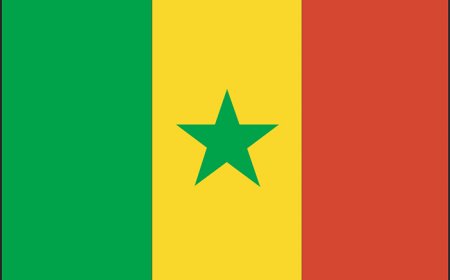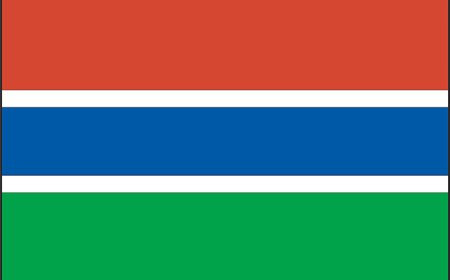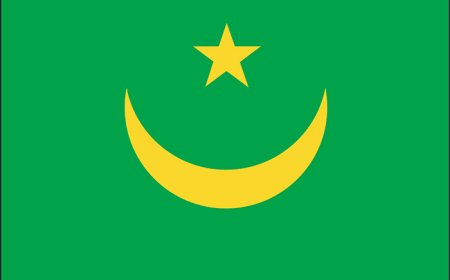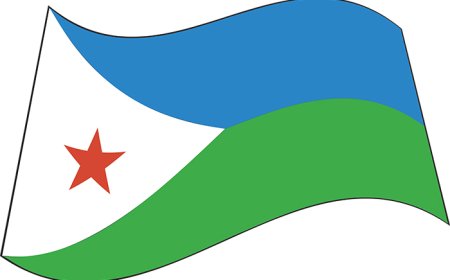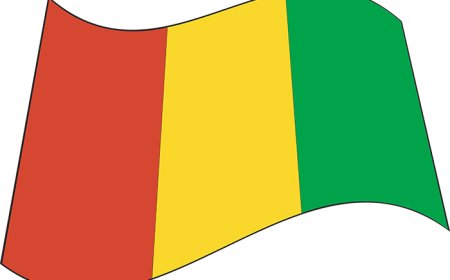Rwanda for Students: Geography, History, and Culture of the “Land of a Thousand Hills”
Explore Rwanda’s rolling hills, resilient people, and journey from tragedy to renewal in this student-friendly article.
🌍 Introduction: Hills of Hope and Renewal
Known as the “Land of a Thousand Hills,” Rwanda is a small, landlocked nation in the heart of East Africa. Although its green, terraced hills once hid deep social divisions that led to the tragic 1994 genocide, today Rwanda stands out for its remarkable recovery, focus on unity, and vibrant development. From the modern capital Kigali to gorilla-filled forests in the Virunga Mountains, Rwanda offers a compelling story of resilience, reconciliation, and progress.
🗺️ Geography & Environment
Rwanda covers about 26,338 square kilometers—roughly the size of Maryland—yet it boasts dramatic elevation changes. The country’s southwestern border climbs into the Virunga volcanic range, home to Mount Karisimbi (4,507 m), where mountain gorillas thrive in Volcanoes National Park. Rolling hills and terraced farms define the central highlands, with elevations around 1,500–2,000 m that grant a temperate climate and cool nights. To the east, the land slopes toward the Serengeti Plains across the border in Tanzania. Numerous lakes—Kivu, Muhazi, and Rweru—dot the landscape, feeding the Ruzizi and Akagera rivers. Rainfall falls mainly from March to May and again from October to December, nourishing tea, coffee, bananas, and beans. Soil erosion on steep slopes poses a challenge, addressed through terracing, reforestation, and watershed protection projects.
🏛️ Government, Language & Population
Since ending the genocide, Rwanda has evolved under a presidential republic system. The 2003 constitution established a strong presidency, a bicameral parliament, and an emphasis on power-sharing among ethnic groups. The capital city, Kigali, sits near the nation’s geographical center and is praised for its cleanliness, safety, and rapid growth as an economic hub. Rwanda’s population of about 13 million includes mostly Hutu (85%) and Tutsi (14%), alongside small Twa and other communities. To foster unity, the government promotes a single national identity, discouraging ethnic labels and emphasizing citizenship. Kinyarwanda is the national language, with French, English, and Swahili as official languages used in government, education, and business. Over 90% of Rwandans practice Christianity, predominantly Roman Catholic and Protestant, with a minority of Indigenous and Muslim beliefs honored.
🎭 Culture & Daily Life
Rwanda’s culture embraces traditional arts, music, and communal life. The intore dance—performed by men in a lineage of royal warriors—features graceful drumming, rhythmic footwork, and vibrant costumes. Agaseke baskets, woven with intricate patterns by women, symbolize peace and hospitality. Daily meals center on ugali or isombe (cassava leaves), accompanied by beans, sweet potatoes, and seasonal fruits like pineapple, mango, and avocado. Coffee and tea ceremonies reflect Rwanda’s role as a top-quality Arabica coffee producer. In rural areas, families work cooperatively on terraced farms, while in Kigali, young entrepreneurs and tech innovators contribute to the country’s “Smart Africa” ambitions. Community meetings—or umuganda—are held on the last Saturday of each month, when citizens unite to build roads, plant trees, and clean neighborhoods, reinforcing solidarity.
📜 History Highlights
Rwanda’s recorded history traces kingdoms of Rwanda and Bugesera, which by the 16th century were ruled by Tutsi monarchs over a primarily agrarian Hutu population. German and then Belgian colonizers (from 1897 to 1962) institutionalized ethnic divisions by identity cards, fueling tensions. Independence in 1962 led to Hutu-led governments, periodic violence, and Tutsi exiles. The 1994 genocide saw extremist Hutu militias massacre over 800,000 Tutsi and moderate Hutu in 100 days. In its aftermath, the Rwandan Patriotic Front (RPF) took power, halted the killing, and instituted Gacaca courts—community-based trials—to promote justice and reconciliation. Subsequent governments have focused on unity, economic growth, and regional integration, with Rwanda hosting the African Union’s continental logistics hub and excelling in tourism, finance, and technology.
💰 Economy & Resources
Rwanda’s economy has grown over 7% annually, transforming from subsistence agriculture to a services-driven model. Coffee and tea remain primary exports, prized for high quality in specialty markets. Minerals—including tin, tungsten, and coltan—support mining sectors governed by strict certification to avoid conflict minerals. Tourism revenue from gorilla trekking, golden monkey excursions, and cultural sites bolsters foreign exchange. The government’s Vision 2020 and National Strategy for Transformation lay out plans for ICT expansion, manufacturing, and renewable energy—notably methane gas extraction from Lake Kivu. Microfinance and cooperative banking advance rural livelihoods, while public–private partnerships develop roads, airports, and housing. Challenges include land scarcity, youth unemployment, and reliance on commodity exports, addressed through education, skills training, and diversification.
🌿 Wildlife & Natural Beauty
Rwanda’s protected areas showcase its biodiversity. Volcanoes National Park shelters the rare mountain gorilla and golden monkey, while Nyungwe Forest National Park—one of Africa’s oldest rainforests—teems with chimpanzees, colobus monkeys, and butterflies along canopy walkways. Akagera National Park preserves savanna ecosystems, with elephant, giraffe, hippo, and lion reintroduced through conservation partnerships. Lake Kivu’s islands host bird colonies and warm springs. Rwanda’s shift to community conservation saw Umubano villages manage wildlife corridors and eco-lodges, aligning habitat protection with local development.
📚 Vocabulary List
Umuganda Monthly community service day where Rwandans work together on local projects
Intore Traditional Rwandan warrior dance
Gacaca Community-based justice courts established after the 1994 genocide
Umubano Development and reconciliation initiative blending community and conservation
Terracing Farming method creating stepped fields on slopes to prevent erosion
Arabica A high-quality coffee species grown in Rwanda’s highlands
Vision 2020 Rwanda’s national development plan aiming for middle-income status by 2020
Golden monkey A rare primate species found in Volcanoes National Park
Methane extraction Harvesting gas trapped in lake-bed for energy production
Landlocked A country entirely surrounded by land, with no coastline
🧒 Kid-Friendly Summary
Rwanda is a small, hilly country in East Africa called the “Land of a Thousand Hills.” People speak Kinyarwanda, English, French, and Swahili. They gather each month for umuganda, when everyone helps plant trees or clean streets. Families cook isombe and share ugali around coffee ceremonies. In the mountains, you can visit mountain gorillas, and in the rainforest, chimpanzees swing among trees. Although a terrible genocide happened in 1994, Rwandans worked to forgive, rebuild, and grow new forests, farms, and cities. Today, Rwanda’s hills are green, and its people look to the future with hope.
🎯 Interactive Quiz: What Do You Know About Rwanda?
What is Rwanda’s nickname?
a) Pearl of Africa b) Land of a Thousand Hills c) Horn of Africa d) Savannah Jewel
✅ Answer: b) Land of a Thousand Hills
Which animal brings tourists to Volcanoes National Park?
a) Elephants b) Mountain gorillas c) Lions d) Rhinos
✅ Answer: b) Mountain gorillas
What community service event happens monthly in Rwanda?
a) Gacaca b) Umuganda c) Vision 2020 d) Intore
✅ Answer: b) Umuganda
What tragic event occurred in 1994?
a) Independence b) Major earthquake c) Genocide d) Volcano eruption
✅ Answer: c) Genocide
What staple food is eaten with stews?
a) Rice b) Ugali c) Injera d) Pasta
✅ Answer: b) Ugali
What is Gacaca?
a) A dance b) A form of community justice c) A national park d) A coffee variety
✅ Answer: b) A form of community justice
Which plan set Rwanda on a path to development?
a) Vision 2020 b) Big Four Agenda c) Plan 2030 d) Agenda 2063
✅ Answer: a) Vision 2020
What language do almost all Rwandans speak?
a) Swahili b) French c) English d) Kinyarwanda
✅ Answer: d) Kinyarwanda
🏫 National Education Standards Alignment
Geography (NGS Standards):
1: Use maps, globes, and geospatial technologies
4: Physical and human characteristics of places
6: How culture influences perceptions of places
10: Human-environment interactions
13: Regional characteristics
History (U.S. Standards):
Historical Thinking Standards 1–3
Eras 7 & 8: Colonialism and its aftermath; contemporary global issues
Social Studies (C3 Framework):
D2.Geo.4-8, D2.His.1-8, D2.Civ.2-8
Literacy (Common Core):
RI.6.1, RI.6.2, RI.6.4, RH.6-8.7


















































